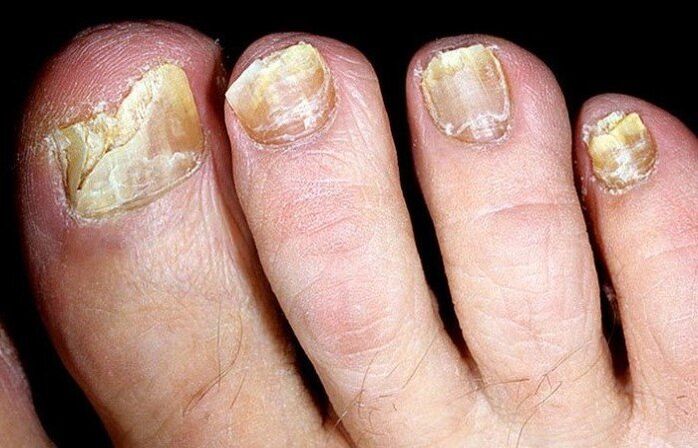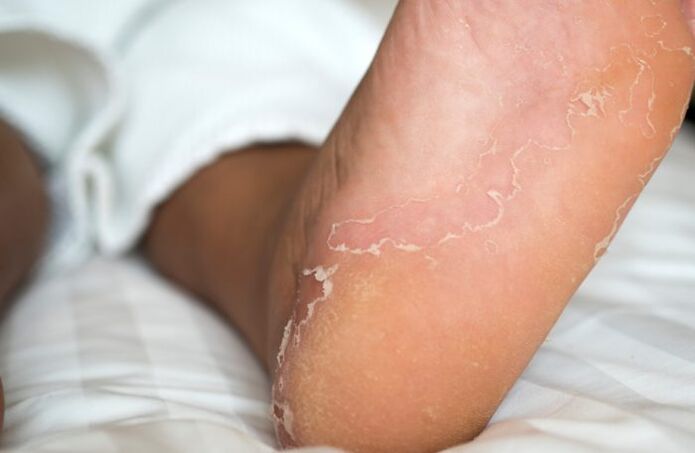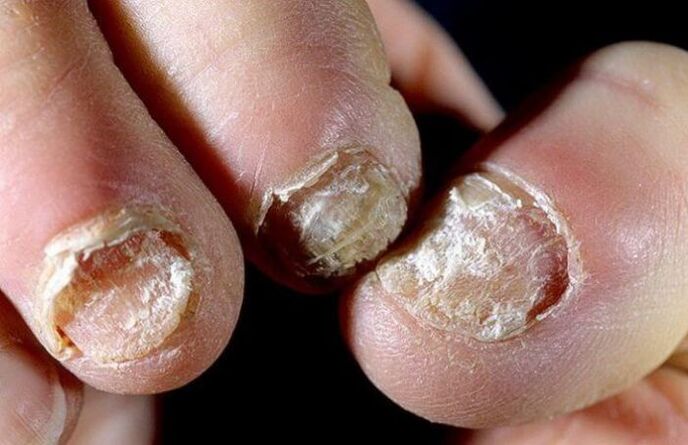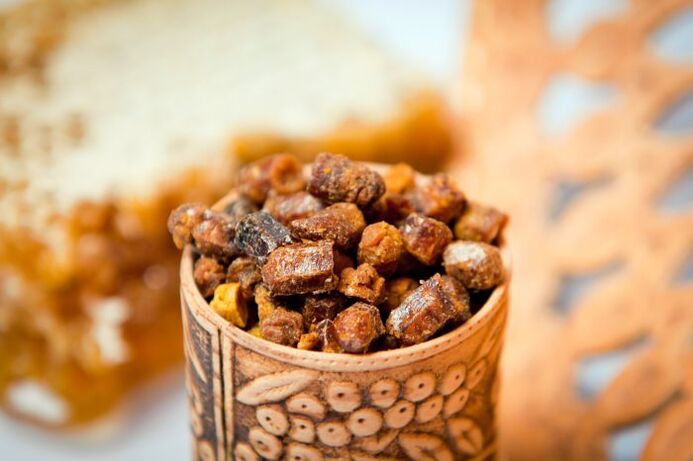Toenail fungus is a fairly common disease that has an infectious nature. It develops due to mycotic organisms: mold, yeast-like fungi of the genus Candida and dermatomycetes.

Scientists say that there are more than fifty types of fungi that can cause toenail disease. At the same time, you must understand that the fight against toenail fungus will not be easy, this is due to the characteristics of the disease and its focal point.
If we take into account the statistics, then about 20 percent of the world's population is faced with this deviation and a similar deformation of the nail.
Causes of fungus
The main reason for the appearance of the fungus is infection with microorganisms of the mycotic species. Often they become dermatomycetes. A huge amount of enzymes help microorganisms easily penetrate the nail and skin. First of all, they affect the feet, and after that they move to the nails.

The infection itself occurs after contact with the carrier of the disease. It can be not only a person or an animal, but also personal hygiene items, places of large crowds of people, especially common showers, baths, pools, and so on.
Reference. Also, the cause of the development of the fungus is excessive sweating (this disease is called hyperhidrosis), metabolic disorders, diabetes of any type, HIV, extra pounds, poor functioning of the immune system, taking certain medications, antibiotics and contraceptives.
The fungus quickly takes root on the skin and nails of people who abuse sweets, which disrupts the endocrine system.
The mycologist is engaged in the treatment of such a disease, it may also be necessary to visit a dermatologist.
Symptoms of the fungus
3 stages
At different stages of the disease, the symptoms of nail fungus can be completely different:
- In the first stage, which is also called the early stage, the symptoms of the disease often do not appear at all. Barely noticeable, almost transparent spots may appear on the nail itself. These stripes or spots may indicate the presence of a fungus, so it is better to consult a doctor and start treatment earlier, or refute your suspicions.
- At the second stage, the natural shine of the nail disappears, later it begins to change color, becomes dull and more yellow, brown stripes or spots form on the nail plate. The upper part of the nail may change.
- On the third, the disease completely affects the nail and it begins to break and exfoliate, the cuticle can become inflamed, and the fungus can also affect neighboring toenails and even the skin.

The second and third stages can be noticed on their own, this no longer requires special tests or diagnostics.
External signs
External signs of the fungus can be called as follows:
- the nail becomes yellow or even brown;
- there are stripes or spots on the plate;
- the nail becomes loose and more dense, but at the same time it quickly breaks and exfoliates.
Attention. In some cases, a person cannot comfortably wear closed shoes, suffering from pain and severe itching. Also, symptoms such as burning, tingling, inflamed lesions, dry skin, peeling around the nail, and so on can speak of the fungus.
Treatment and remedies for fungus
Reference. More recently, nail fungus could only be cured with the help of surgery, when the entire nail plate was removed. However, in rare cases, such an operation was effective: a new nail could grow already infected.
If the damage to the nail is minor, doctors may prescribe special antifungal drugs and ointments that must be applied to the affected area. Modern medicine offers improved transparent varnishes that help to cope with the disease in a short time. If the lesion is in the third stage, then the patient may be prescribed an antibiotic in the form of tablets for oral use.
Folk methods and recipes
Many patients cope with this unpleasant disease with the help of traditional medicine. Below we will describe in detail what folk remedies are used to combat foot fungus.
Vinegar
You can use acetic acid 9 percent or apple solution. Fungal pathogens do not like an acidic environment, and vinegar helps prevent the reproduction of harmful microorganisms.
It can be used as a bath or compress, and it is better to treat not only the affected area, but the entire foot, shoes and clothes. Acetic therapy is not suitable for those who have wounds and cracks on the skin of the legs, as a strong burning sensation will occur during treatment. The simplest compress: vinegar 9 percent and water, in a ratio of 1 to 8.
vegetable juices
Lubricate the affected area with onion juice, it must be fresh. You can also mix garlic juice with water and medical alcohol (1: 1: 1). Another medicinal vegetable is horseradish root, which must first be chopped with a meat grinder.
Essential oils
Another effective folk method is various essential oils that can be added to foot baths, as well as directly applied to the nail plate. It can be essential oil of lavender, rosemary, tea tree oil and others.
How to cure nail fungus fast
Some plants can also help in the treatment of fungus. The effect of their use will be quickly noticeable.
Propolis
Propolis is an effective and fast-acting component in the treatment of toenail fungus. At the same time, it not only helps to get rid of harmful microorganisms, but also reduces discomfort, relieves burning and redness. The most effective way is to wet a cotton swab with a 20% solution and apply directly to the nail plate itself, put a dry cotton pad on top and bandage your finger. The lotion must be used throughout the day, without removing. After that, remove the softened nail. Repeat the procedure until complete recovery.

Celandine
In summer, celandine will help to cope with the disease. With it, you can prepare a healthy mixture: five tablespoons of the plant are poured into 1. 5 liters of boiling water, after which the composition is boiled over low heat for ten minutes. Refrigerate the resulting medicine and strain. Pour celandine into a foot bath and soak in it for 15 minutes. The procedure must be repeated 2 times a day.
Prevention
- Never use someone else's hygiene products, especially pedicure tools.
- Don't wear someone else's shoes.
- Use rubber slippers in places like the pool or sauna.
- Feet after a shower should be thoroughly wiped with a towel.
- Keep track of your immune system, weight and blood sugar.
- Never use wet shoes.
- Socks, tights or stockings should be changed every day.
- Take regular care of your feet.
Conclusion
Remember that in the initial stages of the disease, it is much easier to cure the fungus, so you need to monitor the condition of your nails. If you suspect a nail fungus, you should immediately consult a doctor.


























